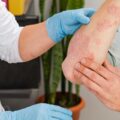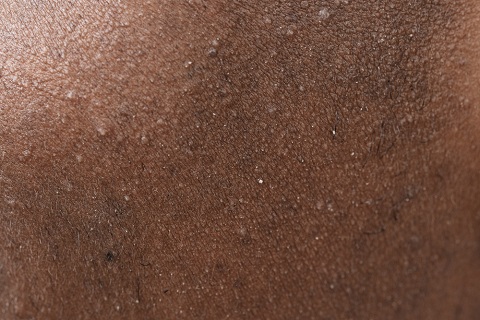Tinea capitis, commonly known as scalp ringworm, is a fungal infection of the scalp and hair follicles. The lesions may be single or multiple and asymmetrically distributed in the body. Though it primarily affects children, adults can also contract this condition. It presents with symptoms like itching, scaling, and hair loss. In this condition cicular ring-like lesions are produced which progress to the periphery while the central part is healed. Understanding its causes, symptoms, diagnosis, and treatment is crucial for effective management.
What Causes Tinea Capitis?
Tinea capitis is caused by various types of fungi, particularly dermatophytes. Microsporum and trichopyton are main responsible for Tinea Capitis. These fungi thrive in warm and moist environments, making the scalp an ideal breeding ground. Transmission commonly occurs through direct contact with an infected person or indirectly through contaminated objects like combs, hats, or pillows. The most common organism is Microsporum canis which is infection seems to take place from both affected human beings and animals.
Signs and Symptoms
The characteristic signs of tinea capitis include a red, scaly rash on the scalp, accompanied by itching and hair loss. This condition can present itself in two clinical types, inflammatory or non inflammatory lesions. Occipital and temporal regions are known to be the sites of choice. In severe cases, swollen lymph nodes may also be present, indicating the body’s immune response to the infection.
In cases of an associated scalp disease, there is a sharply marginated scaling plaque seen, characterized be varying degrees of inflammation.
Diagnosis
Diagnosing tinea capitis involves a combination of physical examination and laboratory tests. A healthcare provider may inspect the scalp for signs of infection and may also perform microscopic examination of skin scrapings and hair samples. Additionally, a culture test may be conducted to identify the specific fungus causing the infection.
Also, diagnosis can be establised by the wood’s lamp illumination test, where only the microsporun infection are seen to show fluoresce.
Prevention
Preventing tinea capitis involves maintaining good personal hygiene practices, such as regular shampooing and drying of the hair and scalp. It’s also crucial to avoid sharing personal items like combs, hats, and towels, which can harbor fungal spores. Always try to keep the scalp and hair dry then the chances of this disease will reduce.
Complications
Complications of tinea capitis include secondary bacterial infections of the scalp, which can worsen symptoms and delay healing. In some cases, permanent hair loss may occur, especially if the infection is left untreated or if scarring develops on the scalp. In many cases severe itching may result in bleeding.
Misconceptions
There are various myths surrounding tinea capitis, such as the belief that it is caused by poor hygiene or that it only affects certain ethnic groups. Dispelling these myths is essential to promote accurate understanding and effective prevention strategies.
Living with Tinea Capitis
Managing tinea capitis involves following prescribed treatment regimens and taking steps to prevent reinfection. Additionally, addressing the psychological impact of the condition, such as feelings of embarrassment or self-consciousness, is crucial for overall well-being.
When to See a Doctor

It’s important to consult a healthcare provider if symptoms of tinea capitis persist or worsen despite home treatment efforts. Prompt medical attention can help prevent complications and ensure proper management of the infection.
FAQs About Tinea Capitis
Yes, if left untreated, tinea capitis can spread to other areas of the body, particularly the face and neck.
Yes, tinea capitis is contagious and can spread through direct or indirect contact with infected individuals or contaminated objects.
Over-the-counter antifungal shampoos may help manage mild cases of tinea capitis, but more severe infections often require prescription medications.
Tinea capitis prevalence may vary depending on geographic location and environmental factors, but it can occur worldwide.
While uncommon, pets, particularly cats and dogs, can carry and transmit the fungi responsible for tinea capitis to humans. Regular pet grooming and hygiene can help prevent transmission.
Conclusion
Tinea capitis is a common fungal infection of the scalp that can affect both schoolchildren with a lower incidence among infants and adults. Understanding its causes, symptoms, diagnosis, and treatment options is crucial for effective management and prevention. By following proper hygiene practices, seeking timely medical attention, and dispelling myths surrounding the condition, individuals can minimize the impact of tinea capitis on their health and well-being.





